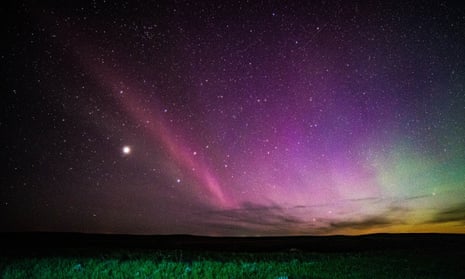A group of citizen scientists in Alberta, Canada, weren’t sure what the glowing purple (sometimes green) arc in the night sky they had been photographing was. Nor were the scientists Elizabeth MacDonald, a space physicist at Nasa, and Eric Donovan, an associate professor of physics and astronomy at the University of Calgary; the group – known as the Alberta Aurora Chasers, who photograph the aurora borealis, or northern lights – showed them their pictures in a pub. It wasn’t, Donovan told them, a proton aurora (the northern lights are normally a result of electrons colliding with gases in the Earth’s atmosphere), as they had thought. “They pulled up this beautiful photograph of this thing,” Donovan told the New York Times last year. “And I’m like, ‘I don’t know what that is, but it’s not the proton aurora.’” It needed a name: “Steve” sounded as good as any. [It was inspired by a scene in the 2006 animation Over the Hedge, in which the animal characters are confronted with a mysterious row of shrubs.]

The phenomenon does now have a backronym of an official name: strong thermal emission velocity enhancement (Steve for short). It can be spotted further south than the northern lights and is thought to be, according to a recently published paper, “an optical manifestation” of another phenomenon, the sub-auroral ion drift. Steve is a visible strip of ionised gas, travelling at 6.4km (4 miles) a second.
Last week, Nasa called on citizen scientists and photographers to help with its research into Steve and report sightings to the Aurorasaurus project. It is, Donovan has said, “a truly new era” of collaboration between amateur scientists and professionals.

Comments (…)
Sign in or create your Guardian account to join the discussion